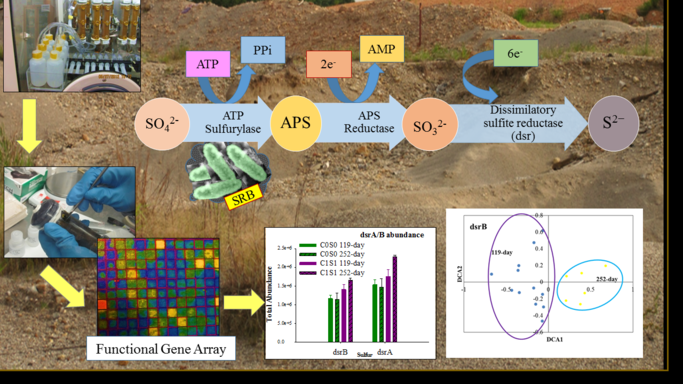Milling and mining metal ores are major sources of heavy metal contamination. The Spring River and its tributaries in southeast Kansas are contaminated with Pb, Zn, and Cd as a result of 120 years of mining activities. Trace metal transformations and cycling in mine waste materials greatly influence their mobility and toxicity and affect plant productivity and human health. It has been hypothesized that under reduced conditions in sulfate-rich environments, these metals can be transformed into their sulfide forms, thus limiting mobility and toxicity. We studied biogeochemical transformations of Pb, Zn and Cd in flooded subsurface mine waste materials, natural or treated with organic carbon (OC) and/or sulfur (S), by combining advanced microbiological and X-ray spectroscopic techniques to determine the effects of treatments on the microbial community structure and identify the dominant functional genes involved in the biogeochemical transformations, especially metal sulfide formation over time. Samples collected from medium-, and long-term submerged columns were used for microarray analysis via functional gene array (GeoChip 4.2). The total number of detected gene abundance decreased under long-term submergence, but major functional genes abundance was enhanced with OC plus S treatment. The microbial community exhibited a substantial change in structure in response to OC and S addition. Sulfur-reducing bacteria genes dsrA/B were identified as key players in metal sulfide formation via dissimilatory sulfate reduction. Uniqueness of this study is that microbial analyses presented here in details are in agreements with molecular-scale synchrotron-based X-ray data supporting that OC-plus-S treatment would be a promising strategy for reducing metal toxicity in mine waste materials.

